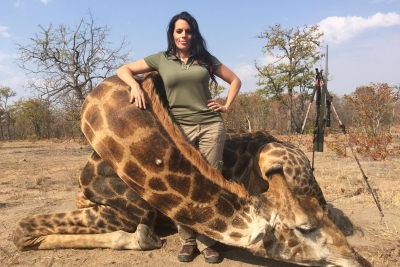
Trophy hunting is the shooting of certain animals – most often rhinoceros, elephant, lion, cheetah, bear, deer, and moose – for recreation. The trophy is the animal or part of it-its head, skin, horns, tusks, antlers, – that the hunter keeps as a souvenir. Its different from poaching because its legal in many countries, although there are some restrictions.
Trophy hunting takes place in most countries of Europe, Africa Asia South America and the US, Canada. Mexico, Australia and New Zealand. Trophy hunting is allowed with varying degrees of transparency and control. The yearly quota is expected to be set based on the conservation status of a species. Highly vulnerable populations are often excluded.
In general a portion of the hunting fee is paid directly to local community members and towards conservation projects to protect the area’s wildlife. In most cases, while trophies such as skin or tusk go to the hunters, the meat would all go to the local population. Hunters pay $65.000 to $140.000 to hunt lions in Zimbabwe, for instance.
Can trophy hunting benefit wildlife?
Supporters say that legal well-regulated trophy hunting programmes can deliver benefits for wildlife conservation. Trophy hunting can generate revenue for wildlife management and conservation including anti-poaching activities, for government, private and community landholders. They point out that loss of habitat and prey, and poaching pose a greater threat to these animals and there is an urgent need to boost conservation efforts.
The ground reality
The ground reality, however, is different Cases of poorly conducted and poorly regulated hunting continue in a number of countries aS a result of weak governance, corruption. lack of transparency and excessive quotas. A report in 2015 says government corruption, especially in Zimbabwe, prevents elephant hunting fees from going towards any conservation efforts. A 2011 study found that trophy hunting was the leading factor in the population decline of lions in Tanzania.
Impact on survival of species
Many people object to the killing of individual animals on ethical grounds, regardless of its conservation benefit Hundreds of thousands of wild mammals, including endangered species, are slain by trophy hunters each year. The U.S. legally imports 126,000 animal trophies every year, and the EU imports 11,000-12,000 animals representing 140 species.
Opponents also cite that the genetic health and social behaviours of species are adversely affected because hunters often target the largest or most significant male of a species. They argue that trophy hunting of should stop as it cannot contribute to the survival of a species.
Picture Credit : Google




